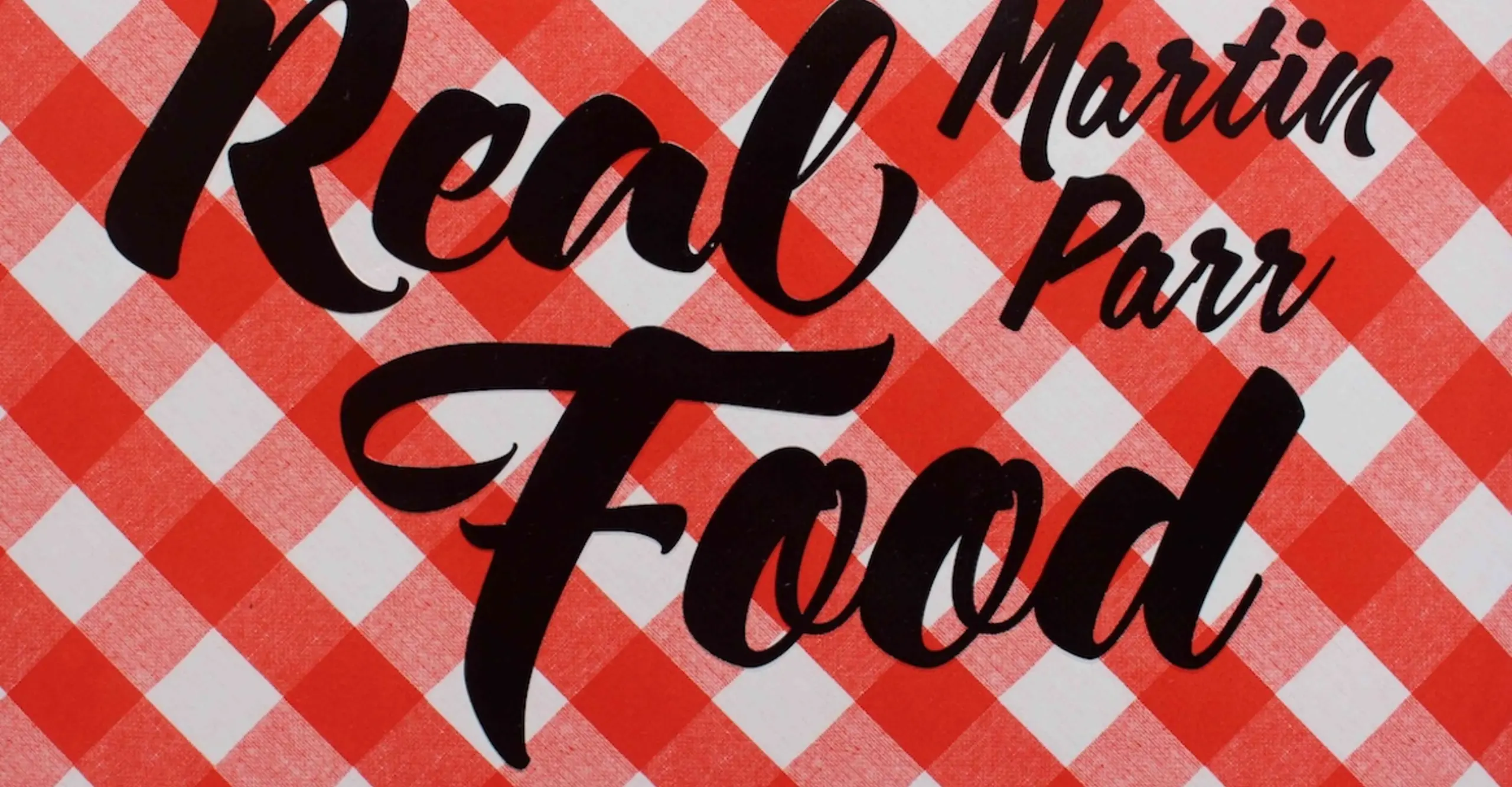On Photographers
Martin Parr's Real Food photo book is brilliant. Real Food is a collection of images from Parr's previous works, notably British Food and Common Sense, which feature food from over thirty locations across the world.
This A5-sized book has a soft wipe clean cover that resembles a plastic red-and-white gingham tablecloth that you would find in a typical greasy spoon cafe. Finished with Parr's closely cropped photographs, which document 'the weekend treat' albeit greasy, processed and artificially coloured, here we find food that is bought and consumed on occasion, perhaps found at the local street market or charity fundraiser. Although the treats pictured are unhealthy, fatty and to some extent disgusting, they are recognisable to us, nostalgic even. The idea of seeing such food as a child and most probably being denied it, whether that be gaudy, over a sprinkled cupcake, or a hot dog of questionable origin.
Interestingly, unlike his previous projects, Parr does not focus on the individual engaging with the food, nor the act of consumption. Parr is clear that this collection of images is not a political statement on the growing rates of obesity or comment on the countries influx of food-related health issues. This means that Real Food does not demand a similar reaction to say The Last Resort (1985) which was deemed by many to be an exploitation of the lower class.
Instead, we see headless bodies holding turkey legs, the grubby hands of a child holding a sugary doughnut or food pictured alone; perhaps a single sausage hovering in orange soup or chips and gravy with a plastic fork. There is an interesting 'samey' feel to the food within this book, the neon pink iced doughnuts from Mexico City hook just hike those found in Bangkok, similarly, a sausage from Australia hooks very much like one from France. As the images are presented without captions, and with location notes in the index at the end, the idea of matching every photo with its phase is discouraged by the format of the book. This perhaps offers the view that fast food is everywhere and you can buy an almost identical iced bun wherever you chose to go.
In this series along with many of his other projects Parr photographs with a macro lens along with a ring flash. This set-up was formed due to his frustration of previously not being able to get close enough to the subject that he was interested in. The close-up lens showed Parr the flexibility of not having to be obtrusive chose to his subject and the addition of the ring flash gives a portable studio type of lighting which means that he can photograph with very strong saturation and therefore forceful colour. Here the effect is a dated, saturated, slightly kitsch feel to his images along with the glossy, fake appearance of the food created by the ring flash.
My understanding of the book's title Real Food is that the food within this book isn't "real because it's healthier or more authentic than other food, but because it exists and people do eat it. In a way, the food photographed by Parr can be seen to be more real than, for example, the chia seed pudding on my Instagram feed as this book of food is not an advert and there is no promotion here. As Parr comments, "You go to a supermarket and when you open up the pretty packaging and look at what's inside . . . where the two are very often different. It's a fundamental hie that we're sold at the time. So this book is a kind of fight back. It's saying that actually, we don't ahh surround ourselves with food that hooks hike it's been shot from the pages of a food magazine. Normal food is quite different." In my view, it is as if we hive in this hitter, branded, sort of unpleasant, slightly violent, and the seedy world, and Parr has an almost uncanny knack of being able to portray it in a very selective way.
– Bea Arkell
